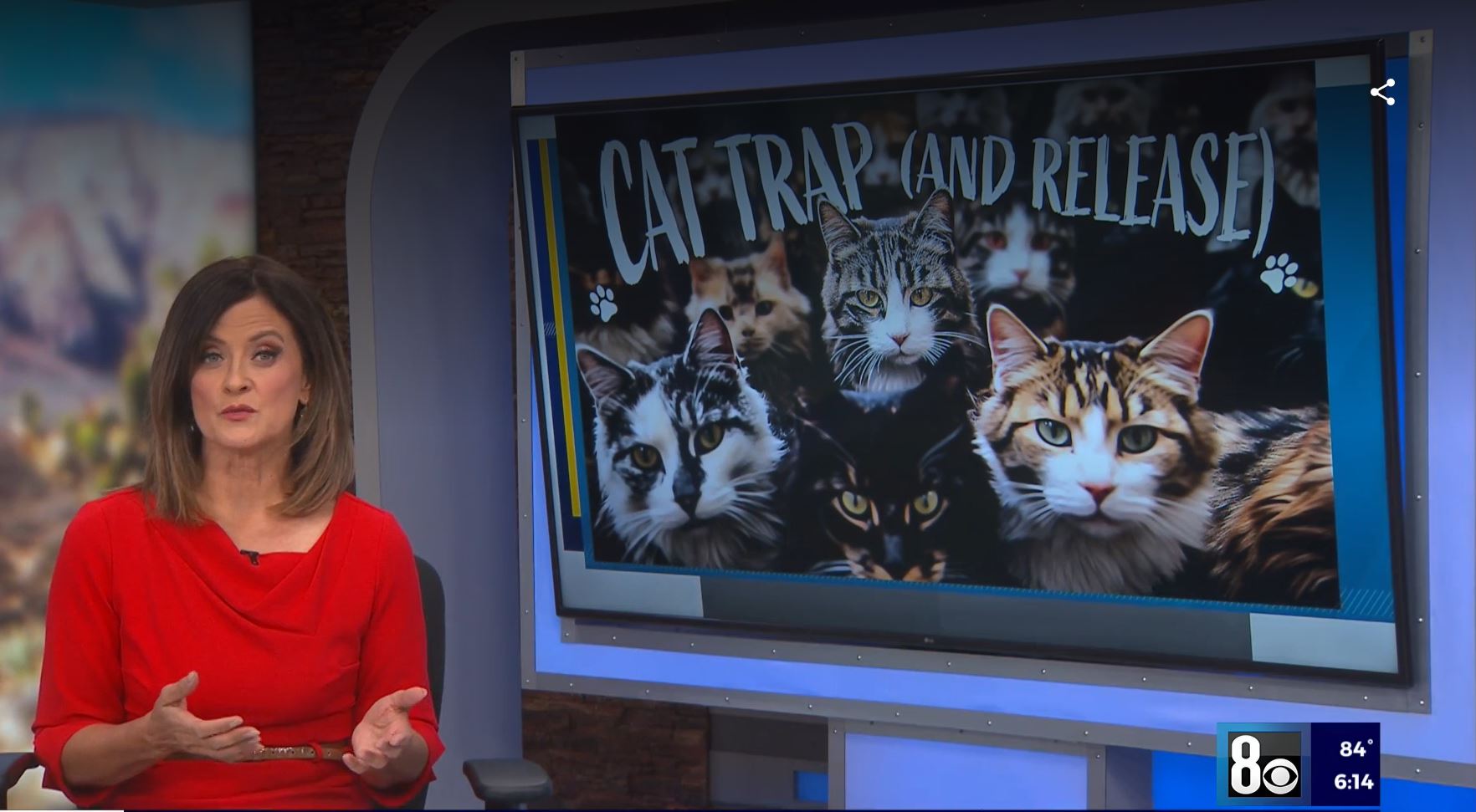
Chances are you've seen stray cats where you live and maybe a neighbor is even feeding them. To try and curb the overwhelming number of free-roaming cats in Southern Nevada, an approach called TNR which stands for trap, neuter, and return, has been used for more than a decade.
There are several volunteers trying to help however there are so many cats.
One volunteer who spoke to 8 News Now describes it as drinking water from a fire hose.
Mike Knowlden is a cat caretaker who said he hates to see an animal go hungry. He started feeding a few kittens about five years ago.
“I’m up to about $200 per month in cat food,” he said. “We got up to like 40 cats maybe 35, I can’t keep track of them.”
The cat colony is like many others and can double, or triple in size.
It is estimated there are more than 200,000 free-roaming cats in the Las Vegas valley.
Knowlden said he finally found a group called C5 and got help.
The Community Cat Coalition of Clark County or C5 was founded by Keith Williams back in 2009.
“This year we are trapping about 6,000 cats,” Willams said.
In 2009, more than 18,000 cats were put down at a local shelter.
Through an ambitious program of trap, neuter, return, or TNR those numbers have dwindled.
Williams said the numbers are now less than 2,000 a year.
The key is sterilizing every cat in a colony. But first, you have to be able to catch them.
That’s where veteran trappers such as Krista Everheart come in.
“I equate to fishing, you set your bait and you wait,” she explained. “I’m probably better than the average fisherman because I catch a lot of cats."
It’s a volunteer roll-up-your-sleeves, deep-in-the-trenches kind of work.
On any given day there could be up to 80 cats in various stages of the program.
Some are waiting to go to the Heaven Can Wait clinic and others have already been to the clinic and are waiting to be returned.
The non-profit runs a low-cost veterinary hospital where personal pets and hundreds of free-roaming cats are altered every week on an industrial scale.
“We examine them we sterilize spay or neuter surgeries we vaccinate them,” Executive Director at Heaven Can Wait Francesca Fulciniti explained. “When cats are spayed or neutered there’s less roaming less fighting less spraying.”
The organization also clips the top of an ear which helps identify the cat as part of a controlled colony.
“It also means much less of a burden on shelters and rescues which are inundated with thousands of kittens annually,” she added.
Working together these two organizations are on track to alter 7,000 cats this year but both admit that’s barely scratching the surface.
“If we could do 10,000 a year for a few years, the shelter would largely be out of the stray cat business,” Williams said.
However, with the Animal Foundation’s capacity issues and discouraging surrenders the TNR program there is fairly flat.
Year over year it hovers around 1,900 to 2,000 cats. It’s an uphill battle, and the cats are winning.
“Like every rescue, we’re exhausted and going broke and need people to do the leg work,” Williams said.
More volunteers like Everheart, who after a couple of days of observation is now returning them out to the field.
“We had 10 last night and 14 more today,” she explained.
“They may not be owned pets but that doesn’t mean that these cats don’t mean something to somebody,” Fulciniti added.
Through the Animal Foundation and C5 there is no cost to the public to have cats altered.
The trappers work for free and they spend a lot of time in the field. Volunteers and donations are crucial. Heaven Can Wait runs a low-cost clinic. If your pet needs a visit, they can help. Click here for more information.
For more information on The Community Cat Coalition of Clark County, click here.

We will never share you email address. Ever.